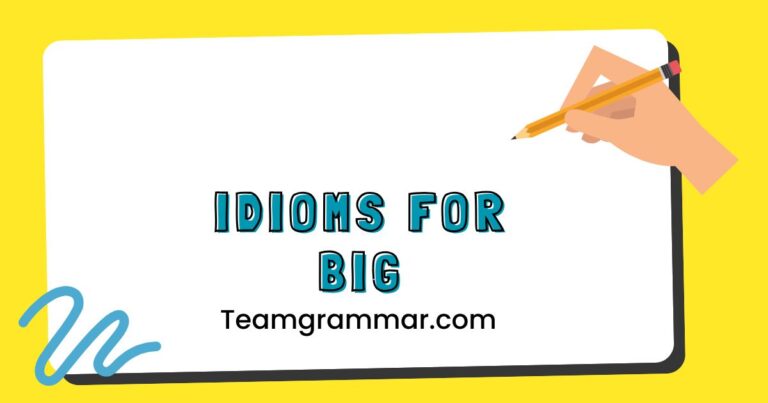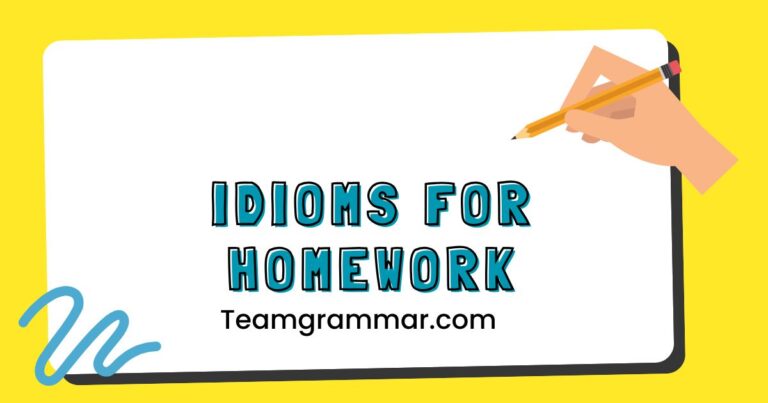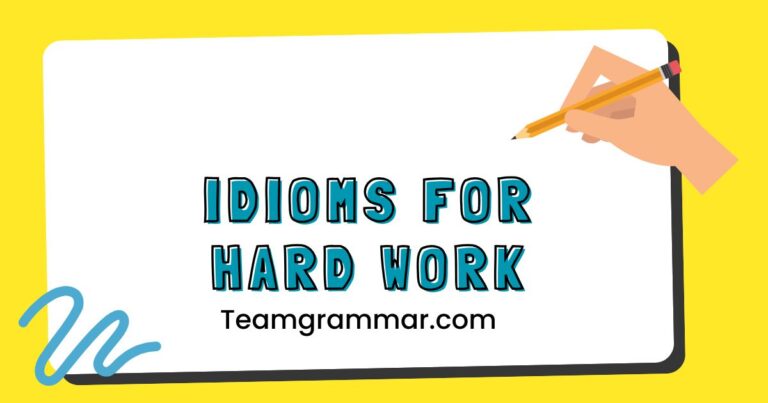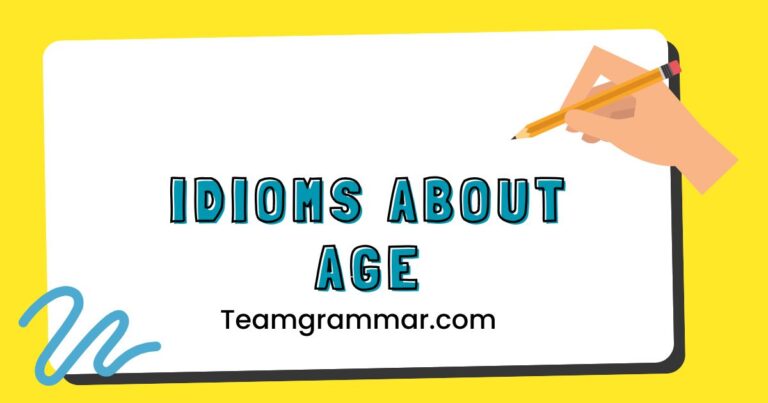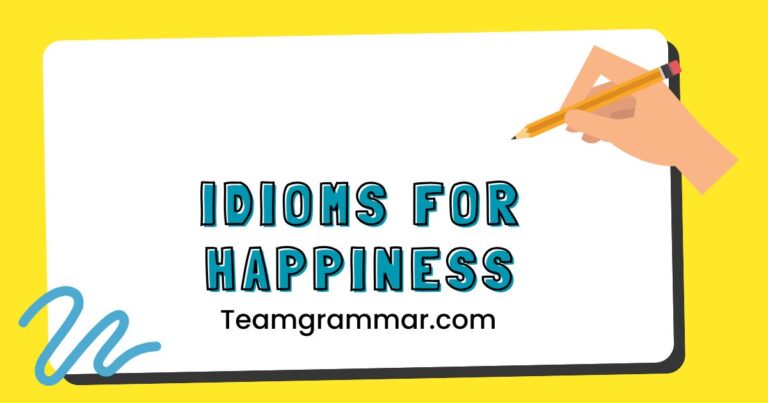37 Hair-Raising Idioms: Mastering English Expressions
Idioms are a fascinating and essential part of the English language, adding color and depth to everyday conversation. Among the vast array of idioms, those related to “hair” stand out for their vivid imagery and diverse meanings.
Understanding these expressions can significantly enhance your comprehension and fluency in English. This article delves into the world of hair idioms, exploring their meanings, origins, and practical usage.
Whether you’re an ESL learner or a native speaker looking to refine your language skills, this guide will provide you with the knowledge and tools to confidently incorporate these expressions into your vocabulary.
Table of Contents
- Introduction
- Definition of Idioms for Hair
- Structural Breakdown
- Types and Categories of Hair Idioms
- Examples of Hair Idioms
- Usage Rules for Hair Idioms
- Common Mistakes with Hair Idioms
- Practice Exercises
- Advanced Topics
- Frequently Asked Questions
- Conclusion
Introduction
Idioms are phrases or expressions where the meaning cannot be understood from the literal definitions of the individual words. They are a crucial aspect of mastering any language, as they often reflect cultural nuances and historical contexts.
Hair idioms, in particular, offer a glimpse into how hair has been perceived and used metaphorically throughout history. Understanding and using these idioms correctly can make your English sound more natural and expressive.
This article aims to provide a comprehensive guide to hair idioms, covering their meanings, origins, and practical applications. From “letting your hair down” to having a “bad hair day,” we’ll explore the diverse and colorful world of these expressions.
Definition of Idioms for Hair
An idiom is a phrase or expression whose meaning is different from the literal meaning of the words that comprise it. Hair idioms are a subset of these, using the concept of “hair” to convey a figurative meaning.
These idioms often relate to emotions, situations, or characteristics that are not literally about hair. Understanding hair idioms requires recognizing that the words are being used metaphorically, not literally.
The context in which they are used is crucial for proper interpretation.
Classification
Hair idioms can be classified based on their thematic content. Some relate to stress or anxiety (e.g., “tear your hair out”), while others describe freedom or relaxation (e.g., “let your hair down”).
They can also be categorized by the emotion or situation they represent, providing a framework for understanding their diverse meanings.
Function
The primary function of hair idioms is to add color and expressiveness to language. They allow speakers and writers to convey complex emotions or situations in a concise and vivid way.
Using idioms correctly demonstrates a strong command of the English language and an understanding of its cultural nuances. Furthermore, they bridge the gap between literal and figurative language, enhancing communication.
Contexts
Hair idioms are used in various contexts, from informal conversations to formal writing. They can be found in literature, news articles, and everyday speech.
The appropriateness of using a particular idiom depends on the audience and the situation. For example, some idioms may be more suitable for casual conversation than for a formal presentation.
The context is essential for determining the appropriateness and effectiveness of an idiom.
Structural Breakdown
Understanding the structure of hair idioms involves recognizing how the individual words combine to create a figurative meaning. Many hair idioms follow a specific pattern, such as a verb followed by a prepositional phrase involving “hair.” For example, “tear your hair out” follows the pattern of “verb + possessive pronoun + hair + out.” Recognizing these patterns can help learners identify and understand new idioms more easily.
The figurative meaning is usually derived from the overall phrase rather than the individual words.
In some idioms, the word “hair” may be modified by an adjective, such as in “bad hair day.” The adjective adds another layer of meaning to the idiom, further emphasizing the figurative sense. Analyzing the structural components of hair idioms provides insight into how they convey meaning.
The combination of words creates a unique expression that goes beyond the literal definitions.
The sentence structure in which the idiom is used also plays a crucial role. The idiom typically functions as a verb phrase or a noun phrase within the sentence.
The surrounding words provide further context and help to clarify the meaning of the idiom. Understanding the structural breakdown of hair idioms is essential for mastering their usage.
Types and Categories of Hair Idioms
Hair idioms can be categorized based on the emotions, situations, or characteristics they describe. Here are some common categories:
Idioms Related to Stress and Anxiety
These idioms often involve actions that suggest frustration or worry. Examples include “tear your hair out,” which means to be extremely worried or frustrated, and “make your hair stand on end,” which means to be very frightened or shocked.
Idioms Related to Freedom and Relaxation
These idioms convey a sense of ease or liberation. “Let your hair down” means to relax and enjoy yourself, while “not a hair out of place” suggests a state of perfect order or composure.
Idioms Related to Appearance and Impression
These idioms describe how someone looks or how they are perceived. “Bad hair day” refers to a day when everything seems to go wrong, often starting with one’s hair looking bad.
“Split hairs” means to argue about trivial details.
Idioms Related to Difficulty or Complexity
These idioms highlight challenging situations. “By a hair’s breadth” means to narrowly avoid something, while “get in someone’s hair” means to annoy or bother someone.
Idioms Related to Deception or Secrets
These idioms involve hidden information or trickery. “Hair-splitting” refers to making excessively fine distinctions or arguments, often to deceive or mislead.
Examples of Hair Idioms
Here are several tables providing examples of hair idioms, categorized by their meaning. Each table includes the idiom, its meaning, and example sentences to illustrate its usage.
Table 1: Idioms Related to Stress and Anxiety
This table showcases idioms that reflect feelings of stress, anxiety, or frustration. Understanding these can help you express these emotions more vividly.
| Idiom | Meaning | Example Sentence |
|---|---|---|
| Tear your hair out | To be extremely worried or frustrated | I was tearing my hair out trying to solve the problem. |
| Make your hair stand on end | To be very frightened or shocked | The scary movie made my hair stand on end. |
| Drive someone to distraction | To annoy someone greatly | The constant noise was driving me to distraction. |
| Keep your hair on | Stay calm | Keep your hair on! There’s no need to panic. |
| Not turn a hair | Show no emotion or surprise | He didn’t turn a hair when he heard the bad news. |
| Get grey hairs over something | To worry a lot about something | I’m getting grey hairs over the upcoming exam. |
| Have a cow | Become extremely upset or angry | My mom had a cow when I told her I crashed the car. |
| Blow a fuse | To become very angry | My dad blew a fuse when he saw the damage. |
| Hit the roof | To become extremely angry | She hit the roof when she found out what happened. |
| Go ballistic | To become very angry and irrational | He went ballistic when he lost the game. |
| Lose your cool | To become angry or upset | He lost his cool during the meeting. |
| Fly off the handle | To suddenly become very angry | He flew off the handle when I criticized his work. |
| Be at your wit’s end | To be so worried or frustrated that you don’t know what to do | I’m at my wit’s end trying to fix this problem. |
| Be on edge | To be nervous and irritable | I’ve been on edge all day waiting for the results. |
| Be strung out | To be extremely anxious and stressed | She’s been strung out ever since the project started. |
| Be tearing your hair out | To be extremely worried or frustrated | I was tearing my hair out trying to solve the problem. |
| Go spare | To become very angry or upset | He went spare when he found out what I had done. |
| Have kittens | To be very anxious or upset | She’ll have kittens when she sees the mess. |
| Sweat bullets | To be very nervous or anxious | I was sweating bullets before the presentation. |
| Chew your nails | To be nervous or anxious | I always chew my nails when I’m stressed. |
| Get your knickers in a twist | To become unnecessarily worried or upset | Don’t get your knickers in a twist, it’s not a big deal. |
| Fret and fume | To worry and show annoyance | He was fretting and fuming about the delay. |
| Bite your lip | To restrain yourself from saying something | I had to bite my lip to stop myself from arguing. |
Table 2: Idioms Related to Freedom and Relaxation
This table explores idioms that symbolize relaxation, freedom, and ease. These expressions add a sense of comfort and informality to your language.
| Idiom | Meaning | Example Sentence |
|---|---|---|
| Let your hair down | To relax and enjoy yourself | After a long week, it’s time to let your hair down. |
| Not a hair out of place | Perfectly neat and composed | She always looks like she doesn’t have a hair out of place. |
| Be footloose and fancy-free | Having no responsibilities or commitments | After retirement, he was footloose and fancy-free. |
| Take it easy | Relax and avoid stress | Just take it easy and don’t worry so much. |
| Kick back | Relax and enjoy yourself | I like to kick back and watch a movie on weekends. |
| Chill out | Relax and calm down | Just chill out and everything will be okay. |
| Unwind | Relax after a period of work or tension | I need to unwind after a stressful day at work. |
| Take a load off | Relax and rest | Come in and take a load off. |
| Be at ease | Relaxed and comfortable | I felt completely at ease in her company. |
| Loosen up | Relax and become less formal | Loosen up a little and enjoy the party. |
| Hang loose | Relax and stay calm | Hang loose, everything will work out. |
| Take a break | Stop working and relax for a short time | Let’s take a break and get some coffee. |
| Catch your breath | Relax and recover after exertion | I need to catch my breath after that run. |
| Coast along | Proceed without effort | After the initial work, we can coast along. |
| Glide through | Move smoothly and effortlessly | She glided through the presentation with ease. |
| Go with the flow | Accept events as they come | Just go with the flow and see what happens. |
| Take things in stride | Deal with problems calmly | He takes everything in stride. |
| Be laid-back | Relaxed and easy-going | She has a very laid-back attitude. |
| Breathe easy | Relax and feel relieved | I can breathe easy now that the exam is over. |
| Let it go | Stop worrying about something | Just let it go, it’s not worth the stress. |
| Live and let live | Accept others’ choices and behaviors | We should live and let live. |
| Go easy on yourself | Treat yourself kindly | Go easy on yourself, you’re doing great. |
| Have a whale of a time | Have a great time | We had a whale of a time at the party. |
Table 3: Idioms Related to Appearance and Impression
This table focuses on idioms that describe appearance, first impressions, and superficial qualities. These idioms often involve judgments and perceptions.
| Idiom | Meaning | Example Sentence |
|---|---|---|
| Bad hair day | A day when everything seems to go wrong | I’m having a bad hair day; nothing is going right. |
| Split hairs | To argue about trivial details | They were splitting hairs over the wording of the contract. |
| Put on airs | Behave pretentiously | She’s putting on airs since she got promoted. |
| Keep up appearances | Maintain a facade of success | They’re struggling financially but keep up appearances. |
| Be all show and no go | Appear impressive but lacking substance | His promises were all show and no go. |
| Be a wolf in sheep’s clothing | Appear harmless but be dangerous | He seemed friendly, but he was a wolf in sheep’s clothing. |
| Be a fair-weather friend | Only be friendly in good times | He’s a fair-weather friend; he disappears when things get tough. |
| Be a smooth operator | Be charming and persuasive | He’s a smooth operator; he can get anything he wants. |
| Be a charmer | Be very likable and attractive | He’s a real charmer; everyone loves him. |
| Be a people person | Be good at dealing with people | She’s a people person; she’s great at customer service. |
| Be a social butterfly | Be very sociable and outgoing | She’s a social butterfly; she knows everyone. |
| Be a trendsetter | Start new trends | She’s a trendsetter; everyone copies her style. |
| Be a fashion plate | Be very stylish and well-dressed | She’s a fashion plate; always looking chic. |
| Be a sight for sore eyes | Be a welcome and pleasant sight | After the long trip, seeing my home was a sight for sore eyes. |
| Be a breath of fresh air | Be refreshing and new | Her ideas were a breath of fresh air. |
| Be the life of the party | Be the most fun and energetic person at a party | He’s always the life of the party. |
| Be the belle of the ball | Be the most beautiful and popular woman at a party | She was the belle of the ball. |
| Be dressed to kill | Be dressed very attractively | She was dressed to kill for the occasion. |
| Be picture-perfect | Be flawless in appearance | The scene was picture-perfect. |
| Be camera-shy | Be uncomfortable being photographed | He’s camera-shy; he doesn’t like having his picture taken. |
| Be a diamond in the rough | Someone with potential but lacking refinement | He’s a diamond in the rough, but he’ll do well. |
| Judge a book by its cover | Judge something by its appearance | Don’t judge a book by its cover. |
| Appearances can be deceiving | Things are not always what they seem | Appearances can be deceiving. |
Table 4: Idioms Related to Difficulty or Complexity
This table lists idioms that describe challenging situations or complexities. These expressions are useful for conveying the degree of difficulty or risk involved.
| Idiom | Meaning | Example Sentence |
|---|---|---|
| By a hair’s breadth | By a very small margin | We won the game by a hair’s breadth. |
| Get in someone’s hair | To annoy or bother someone | Stop getting in my hair while I’m trying to work. |
| Walk a tightrope | Be in a difficult or precarious situation | The company is walking a tightrope financially. |
| Be skating on thin ice | Be in a risky situation | You’re skating on thin ice with your boss. |
| Be in hot water | Be in trouble | He’s in hot water for missing the deadline. |
| Be up against it | Be facing difficulties | We’re up against it with this project. |
| Be between a rock and a hard place | Be in a difficult situation with no good options | I’m between a rock and a hard place. |
| Be in the soup | Be in trouble | He’s in the soup for lying to the boss. |
| Be in a pickle | Be in a difficult situation | We’re in a pickle because we lost the key. |
| Be on the horns of a dilemma | Be faced with two equally difficult choices | I’m on the horns of a dilemma. |
| Be over a barrel | Be in a helpless situation | We’re over a barrel because we need the money. |
| Be in a bind | Be in a difficult situation | I’m in a bind because I need to finish this report. |
| Be in a fix | Be in a difficult situation | We’re in a fix because we ran out of gas. |
| Be up the creek without a paddle | Be in a difficult situation without the means to solve it | We’re up the creek without a paddle. |
| Be between the devil and the deep blue sea | Be in a situation where both options are bad | I’m between the devil and the deep blue sea. |
| Be caught between two stools | Fail because you try to please two opposing sides | He was caught between two stools. |
| Be walking on eggshells | Be very careful not to offend someone | I’m walking on eggshells around my boss. |
| Be treading carefully | Be cautious in your actions | We’re treading carefully in this negotiation. |
| Be on shaky ground | Be in an unstable situation | The company is on shaky ground. |
| Be in a precarious position | Be in a dangerous or uncertain situation | We’re in a precarious position. |
| Be hanging by a thread | Be in a very unstable or dangerous situation | His job is hanging by a thread. |
| Be touch and go | Be uncertain and risky | The surgery was touch and go. |
| Be a long shot | Have a small chance of success | Winning the lottery is a long shot. |
Table 5: Idioms Related to Deception or Secrets
This table features idioms that pertain to deception, secrets, and hidden agendas. These expressions are valuable for describing situations involving dishonesty or hidden motives.
| Idiom | Meaning | Example Sentence |
|---|---|---|
| Hair-splitting | Making excessively fine distinctions | They were hair-splitting over minor details. |
| Pull the wool over someone’s eyes | Deceive someone | He tried to pull the wool over my eyes. |
| Have an ace up your sleeve | Have a secret advantage | He had an ace up his sleeve. |
| Play your cards close to your chest | Keep your plans secret | She’s playing her cards close to her chest. |
| Have something up your sleeve | Have a secret plan or idea | I have something up my sleeve. |
| Keep your options open | Avoid committing to a decision | I’m keeping my options open. |
| Have an ulterior motive | Have a hidden reason for doing something | He had an ulterior motive. |
| Be hiding something | Be concealing information | She’s hiding something. |
| Be keeping something under wraps | Be keeping something secret | We’re keeping it under wraps. |
| Be secretive | Be inclined to keep things secret | He’s very secretive. |
| Be shady | Be suspicious or dishonest | He’s a shady character. |
| Be underhanded | Be deceitful and unfair | His tactics were underhanded. |
| Be two-faced | Be insincere and deceitful | He’s two-faced. |
| Be a snake in the grass | Be a hidden enemy | He’s a snake in the grass. |
| Be a backstabber | Be someone who betrays your trust | He’s a backstabber. |
| Be double-crossing | Be betraying someone you’re working with | He’s double-crossing us. |
| Be playing both ends against the middle | Be trying to benefit from both sides of a conflict | He’s playing both ends against the middle. |
| Be leading someone on | Be deceiving someone into thinking you’re interested | He’s leading her on. |
| Be stringing someone along | Be delaying a decision to keep someone hopeful | He’s stringing me along. |
| Be hedging your bets | Be reducing your risk by supporting multiple options | He’s hedging his bets. |
| Be pulling a fast one | Be tricking someone | He tried to pull a fast one on me. |
| Be pulling the strings | Be secretly controlling a situation | He’s pulling the strings behind the scenes. |
| Be hiding behind a facade | Be concealing your true nature | He’s hiding behind a facade. |
Usage Rules for Hair Idioms
Using hair idioms correctly involves understanding their specific meanings and contexts. Here are some key usage rules:
Understand the Figurative Meaning
The most important rule is to understand that idioms have a figurative meaning, not a literal one. For example, “let your hair down” doesn’t mean to physically loosen your hair; it means to relax and enjoy yourself.
Consider the Context
The context in which you use an idiom is crucial. Some idioms are more appropriate for informal conversations, while others are suitable for formal writing.
Consider your audience and the situation when choosing an idiom.
Use the Correct Form
Many idioms have a fixed form, and changing the words can alter their meaning or make them nonsensical. For example, “tear your hair out” is the correct form, not “tear my hair out” unless you are referring to yourself.
Avoid Overuse
While idioms can add color to your language, overuse can make your speech sound unnatural or forced. Use them sparingly and appropriately.
Be Aware of Cultural Differences
Idioms are often culture-specific, and some may not translate well into other languages. Be mindful of your audience and avoid using idioms that may be unfamiliar or confusing to them.
Common Mistakes with Hair Idioms
Learners often make mistakes when using hair idioms due to their figurative nature. Here are some common errors and how to avoid them:
Literal Interpretation
Incorrect: “She literally let her hair down after work.”
Correct: “She let her hair down after work and had a great time.”
Incorrect Form
Incorrect: “I’m tearing my hairs out over this problem.”
Correct: “I’m tearing my hair out over this problem.”
Inappropriate Context
Incorrect: “The CEO was tearing his hair out during the board meeting.” (Too informal)
Correct: “The CEO was extremely worried during the board meeting.”
Overuse of Idioms
Incorrect: “I had a bad hair day, so I decided to let my hair down and not turn a hair about it.”
Correct: “I had a rough day, so I decided to relax and not worry about it.”
Mixing Idioms
Incorrect: “He’s got an ace in the hole up his sleeve.” (Mixing “ace in the hole” and “something up your sleeve”)
Correct: “He’s got an ace in the hole.” or “He’s got something up his sleeve.”
Practice Exercises
Test your understanding of hair idioms with these practice exercises. Fill in the blanks with the appropriate idiom from the list provided.
- let your hair down
- bad hair day
- split hairs
- by a hair’s breadth
- get in someone’s hair
Exercise 1
This exercise tests your understanding of the basic hair idioms.
| Question | Answer |
|---|---|
| 1. After a long week, it’s time to _____. | 1. let your hair down |
| 2. I’m having a _____; nothing is going right today. | 2. bad hair day |
| 3. They were _____ over the exact wording of the contract. | 3. split hairs |
| 4. The car missed me _____. | 4. by a hair’s breadth |
| 5. Stop trying to _____; I’m trying to concentrate. | 5. get in someone’s hair |
| 6. Just _____ and enjoy the party! | 6. let your hair down |
| 7. She had a _____ when she spilled coffee on her shirt. | 7. bad hair day |
| 8. Don’t _____ over such small details. | 8. split hairs |
| 9. The team won the championship _____. | 9. by a hair’s breadth |
| 10. My little brother always tries to _____. | 10. get in someone’s hair |
Exercise 2
This exercise provides more contextual scenarios to test your idiom knowledge.
- tear your hair out
- make your hair stand on end
- not a hair out of place
- pull the wool over someone’s eyes
- have an ace up your sleeve
| Question | Answer |
|---|---|
| 1. I was _____ trying to solve the math problem. | 1. tear your hair out |
| 2. The ghost story _____ on Halloween. | 2. made my hair stand on end |
| 3. She always looks like she doesn’t have _____. | 3. not a hair out of place |
| 4. He tried to _____ , but I saw through his lies. | 4. pull the wool over my eyes |
| 5. Luckily, I _____ in case things went wrong. | 5. had an ace up my sleeve |
| 6. The suspenseful movie _____ . | 6. made my hair stand on end |
| 7. I was _____ trying to meet the deadline at work. | 7. tearing my hair out |
| 8. The politician tried to _____ with false promises. | 8. pull the wool over our eyes |
| 9. She always looks impeccably groomed with _____. | 9. not a hair out of place |
| 10. The chess player _____ to win the game. | 10. had an ace up his sleeve |
Advanced Topics
For advanced learners, exploring the etymology and historical context of hair idioms can provide a deeper understanding of their meanings. Researching the origins of these expressions can reveal interesting insights into cultural attitudes and historical events.
Additionally, analyzing how hair idioms are used in literature and media can enhance your comprehension of English language nuances.
Another advanced topic is the study of regional variations in idiom usage. Some hair idioms may be more common in certain regions or dialects of English.
Understanding these variations can help you communicate more effectively with diverse audiences. Furthermore, exploring the use of hair idioms in different genres of writing, such as poetry, fiction, and journalism, can broaden your understanding of their stylistic applications.
Finally, creating your own hair idioms can be a challenging but rewarding exercise. By understanding the underlying principles of idiom formation, you can develop new expressions that reflect your own creativity and linguistic skills.
This can involve using metaphors, similes, and other literary devices to create vivid and memorable phrases.
Frequently Asked Questions
- What is the difference between an idiom and a proverb?
An idiom is a phrase whose meaning is different from the literal meaning of its words, while a proverb is a short, well-known saying that expresses a general truth or piece of advice. Idioms are often figurative, while proverbs are more straightforward in their message. For example, “let your hair down” is an idiom, while “look before you leap” is a proverb.
- How can I improve my understanding of idioms?
The best way to improve
your understanding of idioms is through exposure and practice. Read widely, listen to native speakers, and make a conscious effort to learn and use new idioms in your own speech and writing. Flashcards, online resources, and language learning apps can also be helpful tools.
- Are hair idioms common in other languages?
While many languages have idioms related to body parts or physical attributes, the specific hair idioms used in English may not have direct equivalents in other languages. However, the concept of using figurative language is universal, and you may find similar expressions with different imagery in other languages.
- Can I use idioms in formal writing?
The appropriateness of using idioms in formal writing depends on the context and the audience. In general, it’s best to avoid overly casual or colloquial idioms in formal writing. However, some idioms can be used effectively to add emphasis or clarity, as long as they are used sparingly and appropriately.
- How do I know if I’m using an idiom correctly?
The best way to ensure that you’re using an idiom correctly is to check its definition and usage in a reliable dictionary or online resource. Pay attention to the context in which the idiom is used and make sure that it aligns with your intended meaning. If you’re unsure, it’s always best to err on the side of caution and choose a more straightforward expression.
Conclusion
Mastering hair idioms can significantly enhance your English language skills, adding depth, color, and expressiveness to your communication. By understanding the meanings, origins, and usage rules of these expressions, you can confidently incorporate them into your vocabulary and use them effectively in various contexts.
Remember to practice regularly, pay attention to cultural nuances, and avoid common mistakes. With dedication and effort, you’ll be able to navigate the world of hair idioms with ease and fluency, enriching your understanding and appreciation of the English language.


